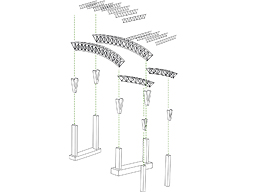
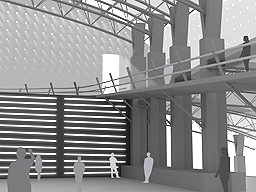
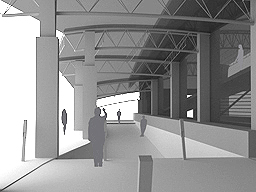
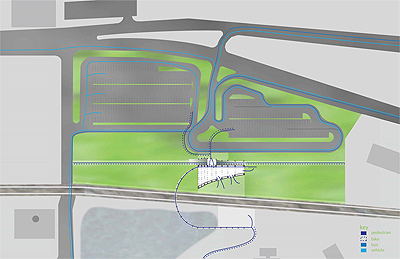
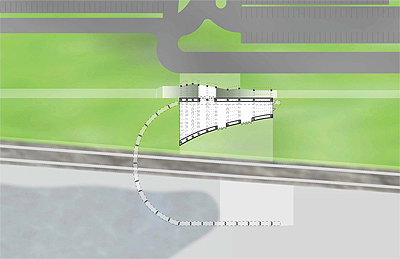
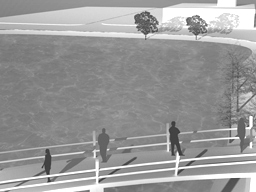
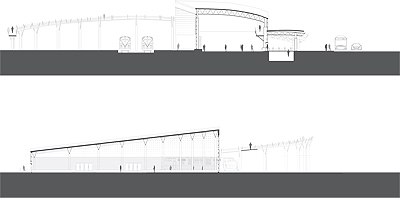
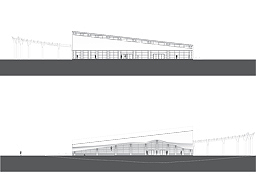
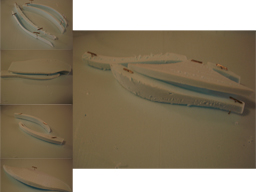
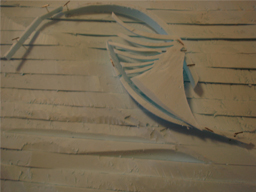
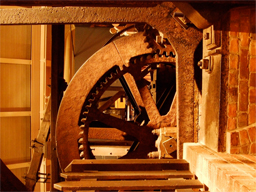
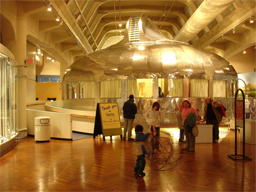
Scott Wenz
The user, circulation, light, wind and the surroundings become the experience and the building the catalyst. The merging of space and environment create instances of connections. Where observations generate the interplay between observer and the observed. As the user progresses through the building different paths of circulation are revealed. The bridge not only connects the building to the ground plane but provides a relationship between indoors and outdoors as it draws you in and out of the building providing moments of awareness of the perimeter (The Henry Ford, the train tracks, Downtown Dearborn and the retention pond).
Moving to the envelope circulation, lighting and wind create a stimulus that unites the envelope and the interior. The fa┴ade becomes an environmental performance system that regulates, filters, and reveals light and wind. It also aids in the conversation of experience and focuses on transparency and awareness to your surroundings. It provides clear view to the tracks and of the people entering and exiting the building. The state of the building becomes a collaborative social production.